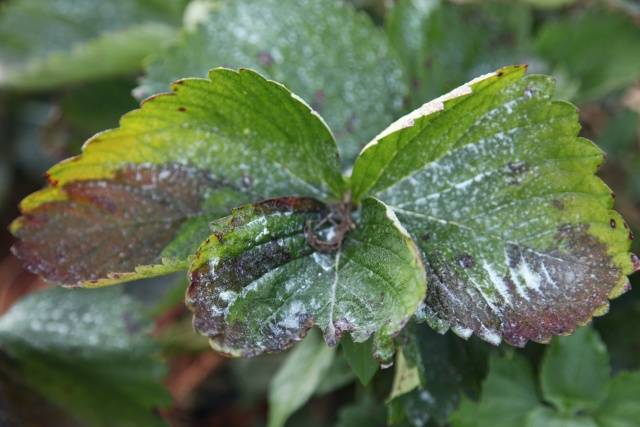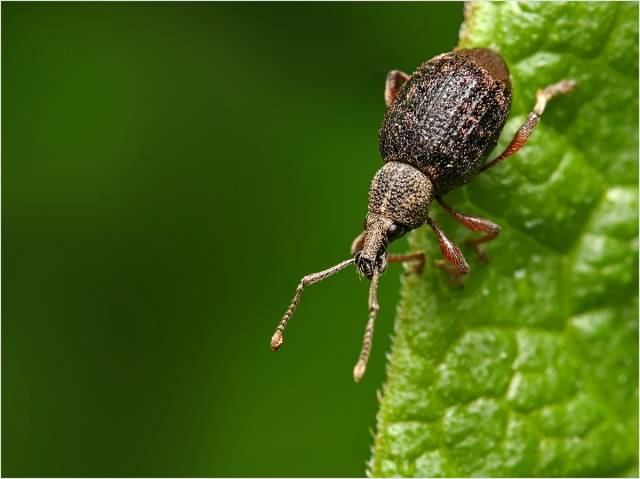Content
Correct strawberry care in the spring at the dacha it promotes the development of plants and a good harvest. Every year the strawberry plant needs pruning, watering and fertilizing. Timely planting will help protect plantings from diseases and insects. Treatment fungicides or folk remedies.
Terms of work
The time for work in the strawberry field depends on the climatic conditions of the region. In the southern regions, the snow melts in March, and by the end of the month the soil in the beds will have dried out.
In the middle zone during this period, you can treat plants with ash or peat before the snow cover melts. In the Urals and Siberian regions, strawberry care begins in April.
When the soil warms up to +3°C, the root system of plants begins to function and new shoots appear. Work begins after the soil has dried.
Strawberry transplant
In the spring, work is carried out to replant strawberries and create new beds. When choosing a place to grow berries, you should adhere to the following recommendations:
- the area should be well lit by the sun;
- it is necessary to exclude the possibility of flooding of plants in spring or during rains;
- planting is carried out in places where legumes and cereals, garlic, onions, beets and carrots previously grew;
- It is not advisable to plant plants in beds where eggplants, tomatoes, cucumbers, peppers, and cabbage previously grew.
For replanting plants, a period of green mass growth is selected. At the same time, the root system grows, so the seedlings can quickly take root in a permanent place.
The soil for planting is pre-prepared. Strawberries prefer light soils, loamy, sandy loam or chernozem. Adding peat will help improve the structure of sandy soil. Coarse sand is added to clay soil.
Healthy bushes are selected for replanting. If the plant is in a depressed state and there are spots on the leaves, then such bushes are not suitable for replanting. By dividing the bush you can get new strawberry seedlings.
Cleaning and loosening
After winter frosts, old flower stalks and dry leaves are cut off on strawberries. It is also necessary to remove last year's mulch, in which pests spend the winter. Old mulch often causes the spread of fungal plant diseases.
The soil is loosened between the bushes to improve its air and moisture permeability. As a result, the penetration of moisture into the soil improves, and nutrients are absorbed faster by plants.
If the strawberry roots come to the surface, then you need to cover them with a layer of soil.Caring for strawberries in early spring includes mulching the beds with straw, sawdust or hay. This treatment will speed up the ripening of the berries and will maintain a certain level of soil moisture.
Excessive thickening leads to the spread of diseases and negatively affects the development of strawberries and their yield. Additionally, rosettes and basal leaves of plants are trimmed. The work is carried out with sharp scissors or pruners.
What to do with strawberries in spring is described in the video:
Watering strawberries
After wintering, strawberries are watered once a week. In case of heavy rainfall, the procedure is performed less frequently. The first watering is carried out at the beginning of plant growth. Each bush requires up to 0.5 liters of water. Before flowering Loosening and mulching will help retain moisture in the soil.
Watering is done at the roots of plants. Work is carried out in the morning or evening, when there is no direct exposure to the sun. The soil must remain moist at all times. When the first inflorescences appear, watering is carried out between the rows of plantings.
High humidity creates a favorable environment for the spread of fungal diseases and pests. Moisture should be supplied to the plants regularly and penetrate to a depth of 40 cm into the soil.
Feeding rules
An obligatory step in the list of procedures on how to care for strawberries in the spring is the application of fertilizers. During this period the first fertilizing strawberries. It is carried out before the plants flower, when the bushes begin to grow after the snow melts. Processing stimulates the development of strawberries and the growth of green mass.
A solution is prepared for feeding, which is then used to water the roots of plants. Experienced gardeners in spring fertilize strawberries by the following means:
- mullein solution in a ratio of 1:10;
- 1 part whey or low-fat milk to 3 parts water;
- solution of chicken manure in a ratio of 1:12.
Herbal infusion helps saturate plants with nitrogen. It is prepared on the basis of nettle or other weed. Chopped fresh herbs should fill the bucket by a third, after which it is filled with water. The product is infused for 3-4 days, then used for watering.
Spring strawberry care includes fertilizing with wood ash. It contains calcium, potassium and phosphorus, which are necessary for the full development of plants. A solution is prepared based on the ash, which is used to water the plantings. Ash is also added to the soil before planting strawberries.
Disease Prevention
The cause of most diseases is the spread of a harmful fungus. Its spores affect the ground part of plants, leading to rot and spotting on the leaves.
Prevention of strawberry diseases begins in early spring, when affected leaves and stems of plants are eliminated. To prevent planting, they are treated with fungicides - chemicals that can destroy fungus. All preparations are used before flowering begins.
The fungicides “Fundazol”, “Euparen”, “Alirin” have good properties.The products are used strictly in accordance with the instructions.
The fungus spreads when there is high humidity in warm weather. Caring for strawberries after winter, timely pruning of plants and mulching the soil will help to avoid such conditions.
Traditional methods for treating diseases allow you to disinfect soil and strawberries. One of the plant treatment options is Garlic infusion, which will require 0.1 kg of arrows, peels or chopped heads of garlic. The product is poured with warm water and left for a day. Garlic infusion is used to water strawberries.
Iodine solution has similar properties. To prepare it, take 10 drops of iodine and 10 liters of water. Plant treatment can be carried out every week.
Another means for cooking in country conditions is mustard infusion. It is prepared by diluting 50 g of mustard powder in 5 liters of water. The product is left for two days, then another 5 liters of water are added and the plants are watered.
Pest Control
Strawberries after winter need additional protection from pests. Insects can cause serious damage to the strawberry crop. To combat them, plants need to be treated in early spring.
The greatest damage to plantings is caused by weevils, aphids, nematodes, and slugs. Special preparations will help get rid of insects - “Karbofos”, “Corsair”, “Metafos”, “Zolon”. They are used only before the plants begin to flower.
An effective insect repellent is a pink solution of potassium permanganate.The rows between plantings are sprinkled with ash, tobacco dust or superphosphate. Special granules “Thunderstorm” or “Meta” are used against slugs.
On the advice of experienced gardeners, strawberries are cared for in the spring using folk remedies:
- onion infusion (0.2 kg of peel is poured into 10 liters of water and left for 3 days);
- wormwood decoction (1 kg of crushed plants is poured with water and boiled for 10 minutes, then used for watering);
- mustard solution (0.1 kg of mustard powder is diluted with water and poured over the strawberries).
Planting onions, garlic, marigolds, fennel, and mustard will help protect strawberries from pests. These plants
Conclusion
The time it takes to care for strawberries largely depends on the region. Procedures begin after the snow melts. With timely pruning, watering and fertilizing, the plantings will be able to develop normally. Every 3 years the location for the beds is changed.
In spring, plants are prevented from diseases and pests. For this purpose, folk remedies or chemical preparations are used. Most work in the spring is completed before the strawberries begin to bloom.

















